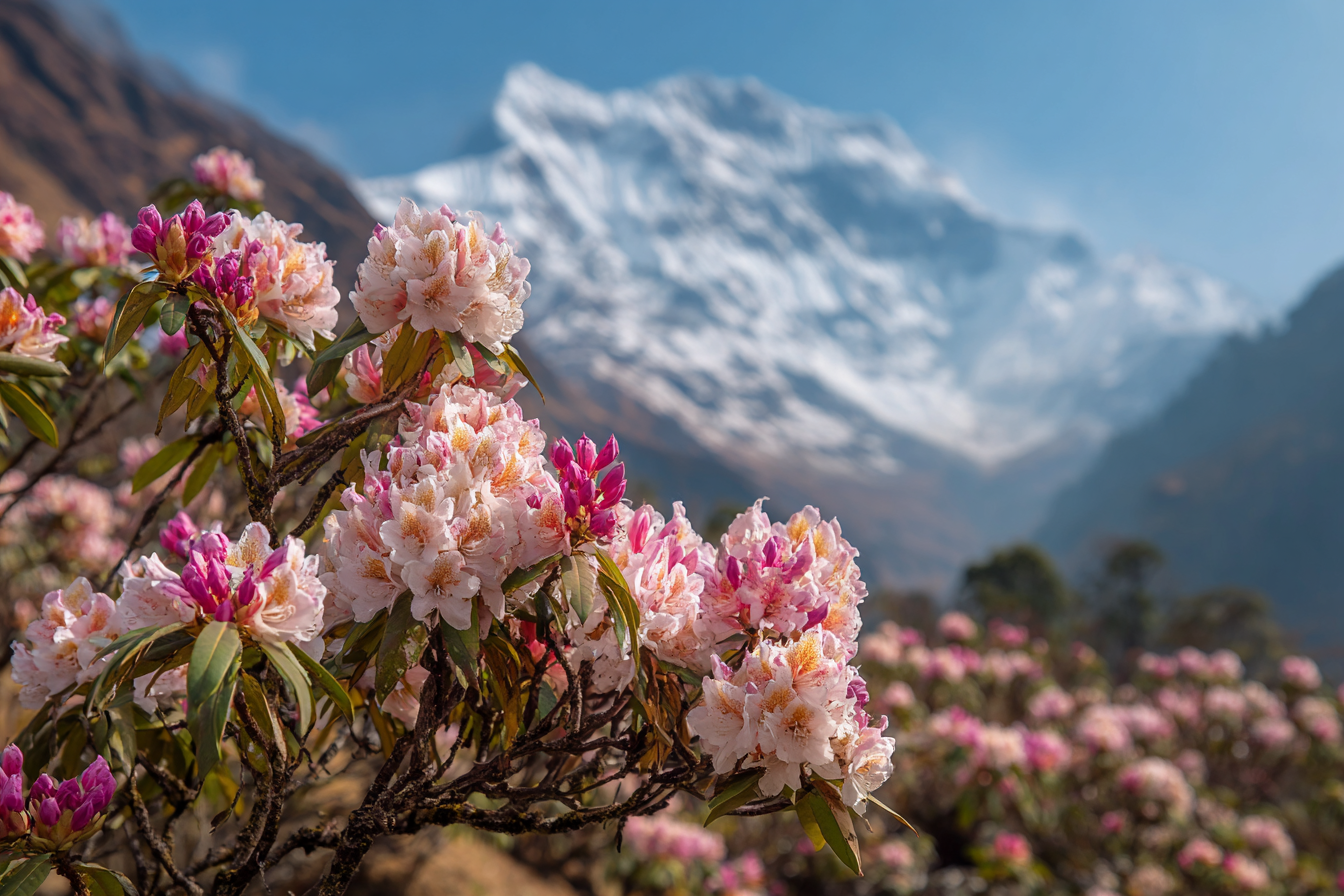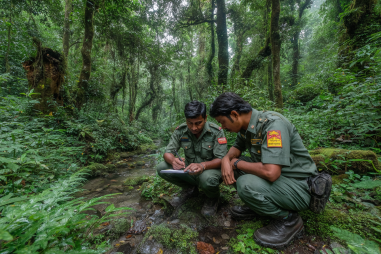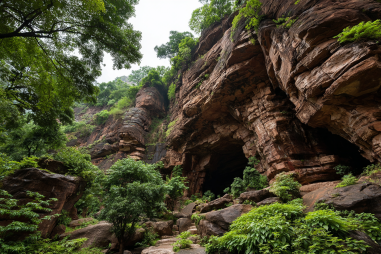The Annapurna Base Camp, nestled in the heart of the Himalayas, is not only a haven for trekkers seeking breathtaking mountain views but also a sanctuary for remarkable biodiversity. As you venture through this region, you’re greeted by a rich tapestry of plant and animal life that greatly enriches the trekking experience. From vibrant rhododendron carpets to elusive wildlife, the flora and fauna of Annapurna tell a story of resilience, adaptation, and natural beauty. Let’s embark on a journey to uncover the ecological treasures waiting along the Annapurna Base Camp trail.
Overview of Annapurna’s Diverse Ecosystems
The Annapurna region is characterized by its incredible altitudinal range, stretching from subtropical valleys around 1,000 meters to alpine meadows and rocky peaks over 8,000 meters. This variation creates multiple ecosystems packed within a relatively compact area, each with its unique biodiversity. As you ascend, the environment shifts from lush, warm forests to cooler temperate zones and finally to sparse high-altitude zones where only the hardiest plant species survive. This diversity supports a wide variety of flora and fauna, making the trail a dynamic outdoor laboratory for nature lovers.
Key Plant Species: Rhododendrons, Oak, and Bamboo Forests
One of the most iconic features of the Annapurna trekking corridors is its spectacular rhododendron forests. These shrubs, with their dazzling red, pink, purple, and white blossoms, paint the slopes spectacularly in spring. Rhododendrons thrive mainly between 2,000 to 3,500 meters, enchanting trekkers with bursts of color amidst the green backdrop.
As you descend to lower altitudes, oak and maple dominate the forests, providing a dense green canopy that supports countless bird and insect species. These broad-leafed trees play a crucial ecological role, maintaining soil stability and moisture balance.
Lower down, especially between 1,000 and 2,000 meters, you’ll encounter dense bamboo groves. Bamboo isn’t just a plant here; it’s an entire ecosystem in itself, supporting unique wildlife including red pandas and various bird species. Its fast growth rate and robust structure are vital in preventing landslides along the rugged terrain.
Wildlife to Watch For: Birds, Mammals, and Insects
The Annapurna region is a wildlife enthusiast’s dream. Birdwatchers will be thrilled by the presence of species like the Himalayan Monal, Nepal’s national bird known for its iridescent plumage, and the colorful Satyr Tragopan. You’ll also spot vultures soaring overhead and tiny, vibrantly colored sunbirds flitting from flower to flower.
Mammals in Annapurna are more elusive but certainly present. Snow leopards and blue sheep are rarely seen but inhabit the higher reaches, while lower and mid-altitude forests are home to Himalayan tahr, langur monkeys, and the shy musk deer. Insects, though often overlooked, create a fascinating, buzzing microcosm—from multitudes of butterflies to specialized bees that pollinate local flowers.
Seasonal Changes in Flora and Fauna
The biological landscape of Annapurna shifts dramatically with the seasons. Spring (March-May) heralds the peak of rhododendron blooms and increased activity among wildlife, with many animals coming out of hibernation and birds engaging in courtship displays. Summer (June-August) brings the monsoon rains, transforming the region into a lush green paradise, though trekking becomes more challenging.
Autumn (September-November) is arguably the best time for trekking and wildlife observation, with mild weather and clear skies allowing panoramic views and active fauna. Many mammals are more visible as they prepare for winter. Winter (December-February) sees a drop in temperatures, snow at higher altitudes, and many animals retreating to lower elevations or less active states, though the crisp air and serene landscapes offer their own unique charm.
Conservation Efforts in the Annapurna Region
Recognizing the ecological significance and the increasing human impact from trekking and tourism, several conservation programs have been put in place. The Annapurna Conservation Area Project (ACAP) is one of the world’s most successful community-based conservation initiatives. It engages local communities in protecting the environment while promoting sustainable tourism.
ACAP emphasizes strict waste management, habitat preservation, and education about the environment. Efforts include trail maintenance to reduce erosion, bans on plastic use in trekking areas, and local ranger programs that monitor wildlife and prevent poaching. These measures are vital in safeguarding the region’s delicate ecosystems and ensuring that the Annapurna Base Camp remains a thriving natural habitat.
Tips for Responsible Wildlife Observation
If you’re lucky enough to encounter wildlife during your trek, responsible behavior is crucial to protect these species and their habitats:
- Maintain a respectful distance — do not attempt to approach or feed wild animals.
- Keep noise to a minimum to avoid startling animals.
- Stick to marked trails to minimize disturbance to vegetation and ground-dwelling creatures.
- Avoid using flash photography, which can distress animals.
- Dispose of waste properly and carry out any litter you bring in.
- Follow guidelines and advice provided by local guides or conservation authorities.
How Biodiversity Enhances the Trekking Experience
The wide variety of plants and animals you encounter along the Annapurna trail adds invaluable richness to the trekking journey. Each ecosystem along the route offers a new perspective, allowing trekkers to connect deeply with nature. Observing vibrant flowers in bloom or glimpsing a rare bird can turn a simple walk into an unforgettable event, heightening the sense of awe and respect for the natural world.
This biodiversity not only beautifies the landscape but also contributes to the ecosystem services that support human life—such as clean air, fresh water, and fertile soil. Understanding this interconnectedness encourages trekkers to become ambassadors for environmental stewardship.
Photography Tips for Capturing Nature
Capturing the stunning flora and fauna of Annapurna on camera is a rewarding part of your adventure. Here are some tips to help you make the most of your photo opportunities:
- Use natural light: Early mornings and late afternoons provide soft, golden light ideal for landscape and wildlife shots.
- Bring a zoom lens: This allows you to photograph animals without disturbing them.
- Be patient: Wildlife photography requires waiting quietly for the right moment.
- Focus on details: Close-ups of flowers, textured bark, or insects can capture the unique character of the region.
- Respect wildlife: Never chase or harass animals for photos.
- Steady your camera: Use a tripod or stable surface for sharper images, especially in low light.
Protecting This Natural Heritage
The flora and fauna of Annapurna Base Camp are a testament to nature’s resilience and diversity, representing an invaluable heritage for Nepal and the world. Trekking in this region offers more than just physical challenge or scenic beauty—it provides a rare chance to witness ecosystems thriving in harmony.
Every visitor has a role to play in protecting this environment. By respecting local conservation rules, minimizing ecological footprints, and spreading awareness about the importance of biodiversity, trekkers help ensure these natural wonders remain for generations to come. Celebrating and safeguarding Annapurna’s rich flora and fauna is essential for maintaining the magic that has drawn adventurers here for decades.







